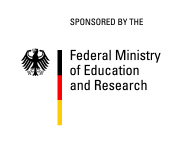HOKLIM
High-resolution Climate Indicators
for 1.5 Degree Global Warming

Project results for Europe
The central findings of the project can be found in three publications:
- L. Samaniego*, S. Thober*, R. Kumar, N. Wanders, O. Rakovec, M. Pan, M. Zink, J. Sheffield, E. F. Wood & A. Marx: Anthropogenic warming exacerbates European soil moisture droughts, Nature Climate Change, Volume 8, Pages 421–426 (2018), *: contributed equally
- A. Marx, R. Kumar, S. Thober, O. Rakovec, N. Wanders, M. Zink, E. F. Wood, M. Pan, J. Sheffield, and L. Samaniego: Climate change alters low flows in Europe under global warming of 1.5, 2, and 3 °C, Hydrol. Earth Syst. Sci., 22, 1017-1032, 2018
- S. Thober, R. Kumar, N. Wanders, A. Marx, M. Pan, O. Rakovec, L. Samaniego, J. Sheffield, E. F. Wood, and M. Zink: Multi-model ensemble projections of European river floods and high flows at 1.5, 2, and 3 degree global warming. 2018 Environ. Res. Lett. 13 014003
- S. Thober, A. Marx, F. Boeing (2018): Auswirkungen der globalen Erwärmung auf hydrologische und agrarische Dürren und Hochwasser in Deutschland. Condensed result brochure for regional decision makers in Germany, available in German language only. Download HOKLIM brochure
Introduction
The aim of the HOKLIM project is to investigate the biophysical effects of a 1.5°C, 2°C and 3°C global warming on the water cycle in Europe. For this purpose, hydrological simulations are carried out on a spatial resolution of 5 km for the entire domain of the European Union. We consider different hydrological models, climate models and emission scenarios in this project. A special focus within our evaluation is on floods, hydrological and agricultural droughts (Fig. 1).Global warming of 2 degrees compared to pre-industrial conditions was set as a main target at the COP21climate conference in Paris. Within the last years, research on the effects of climate change on society and the environment has concentrated on climate projections, which are based on a warming of 2°C to 3°C and above. Our results will contribute to improved scientific information with respect to the 2 degree goal.

The video explains the EDgE project. It is produced by the Environment Agency as part of the Copernicus ECMWF EDgE proof-of-concept project.
Project overview
The IPCC has decided to publish a special report on the effects of a global warming of 1.5°C compared to pre-industrial conditions (SR1.5). A comprehensive scientific assessment of the effects of global warming of 1.5°C, however, has not yet been achieved. An estimation of the possible positive effects compared to a global warming of 2°C or 3°C is also not available for the water sector of Europe and Germany. The HOKLIM project aims at investigating this. Our project is based on high-resolution model simulations for Europe using different climate models and hydrological models. The model simulations are based on different emission scenarios (RCP2.6, RCP6.0 and RCP8.5) and thus allows the assessment of different climatic parameters at various heating degrees (1.5°C, 2°C and 3°C) taking into account the uncertainties of the model. To this end, sector-specific indices and indicators on floods and hydrological droughts as well as soil moisture droughts are used, which have been developed in the ongoing EDgE project together with stakeholders. They thus consider the specific information requirements of different sectors such as water and energy supply, agriculture and shipping. Another key feature of HOKLIM is the provision of discussion and decision-making tools for the political process following SR1.5 and for the public. Indicator-based brochures will be created for this purpose. The data and indicators are suitable to support both German and European data sets on climate indicators as well as to enable climatic studies.
Climate models and emission scenarioes
We use five CMIP5 climate models within the HOKLIM project: GFDL-ESM2M, HadGEM2-ES, IPSL-CM5A-LR, MIROC-ESM-CHEM, and NorESM1-M. These were provided within the ISIMIP and EDgE project. We use three emission scenarios to show different degrees of warming. These are the RCPs 2.6, 6.0 and 8.5. Within the EDGE project, a model chain was developed to downscale climate model data to a spatial resolution of 5 km for the entire EU domain. We use these within the HOKLIM project to obtain forcing data for three hydrological models for the period from 1970 to 2099 (reference period: 1971-2000).
Hydrological models
We use three hydrological models for the simulation of runoff and soil moisture on the entire EU domain. These are:
- the mesoscale Hydrologic Model (mHM)
- the land-surface model Noah-MP
- the hydrologic model PCR-GLOBWB
Estimation of sector-specific climate impact indicators
Within the evaluation of the simulation results, we use sector-specific climate indicators (SCIIs) for floods and hydrologic droughts and soil moisture droughts, which were developed jointly with stakeholders in the EDgE project. These include the specific information requirements within the water sector.
Societal impacts of the project results
HOKLIM focuses on communicating the project results to the general public. The high-resolution data base, created within the project, will contribute to the global IPCC Special Report SR1.5, to support political discussions on the 1.5-degree target in Germany and to existing and developing indicator systems.
Knowledge transfer - further processing of the project results for the IPCC SR1.5
To support the information base for the IPCC SR1.5, our goal is to publish the results in scientific articles. The publications will deal with the results for the three areas of flood, low water and soil moisture separately. Scientific-technical processing of the project results
The data generated in the project should be made publicly available. The hydrological data underlying the indicators are provided in the UFZ data management system (web portal). Thus, the scientific use of the data beyond the life time of the project is ensured, e.g. for further impact studies on agricultural yield. Furthermore, the data supports different indicator systems, e.g. the German adaptation strategy and the corresponding monitoring report or the existing/planned indicator systems of the federal states.
